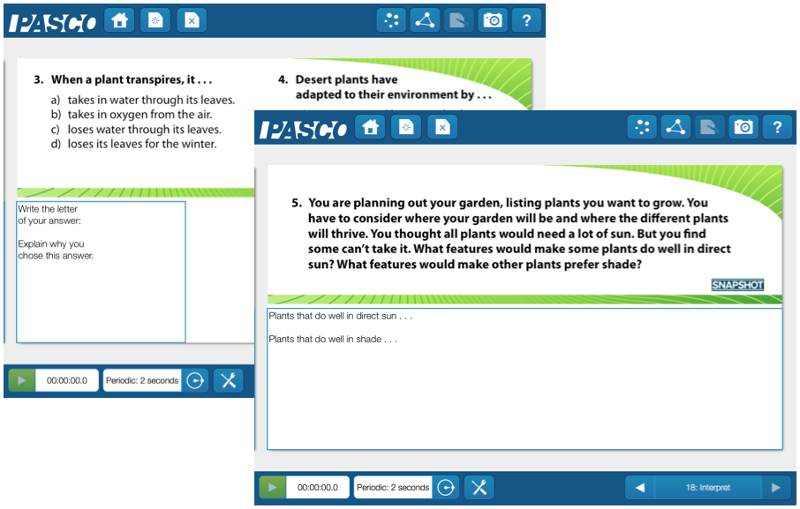Leaf Lessons
A Key Concepts in Life Science SPARKlab from Sally Ride Science® and PASCO
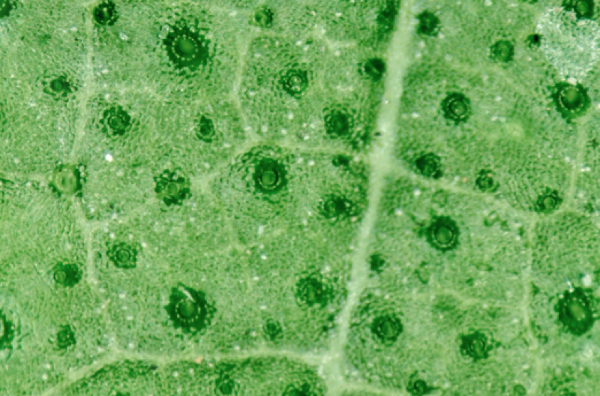
This short activity introduces students to plant adaptations and the process of transpiration while being a great way for you to integrate technology into the lesson. The lab uses an Absolute Pressure Sensor, some tubing, a twig with leaves, and a few items found in your science lab.
Plants transpire. They lose water through tiny pores (stomata) in their leaves through evaporation. The process of transpiration helps transport materials from the roots of a plant to its stems and leaves. Some kinds of plants, like cacti, have a thick, waxy coating that reduces water loss through transpiration. In Leaf Lessons, students model how a protective coating like those commonly found in plants found in dry climates affect the rate of transpiration when compared to a plant that does not have the coating.
To set up, take the plastic tubing and fill it with water. The tubing should be held in a “U" shape to keep the water from running out. Insert the stem into one end, taking care to not have any air bubbles at the stem. Next, connect the tubing to the pressure sensor using a connector. Finally, clamp the tubing and the sensor to the support rod so that the tubing maintains its "U" shape. Once the set-up is complete, collect data for 10 minutes.
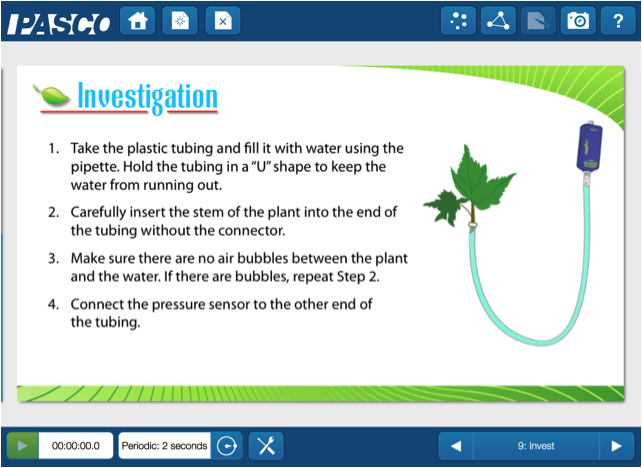
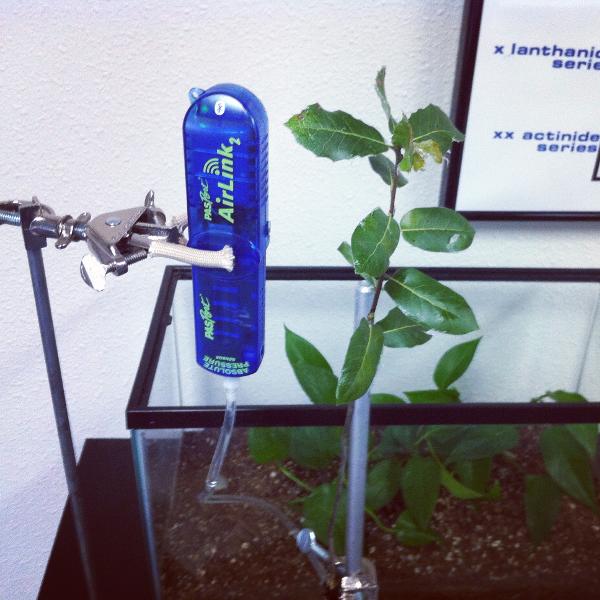
The graph below shows how the air pressure changed. It decreased from 99.8 kPa to 92.7 kPa. Running a linear fit reveals the rate of pressure change. The air pressure decreased at a rate of 0.0182 kPa/sec. The decrease in air pressure occurred due to the evaporation of water through the pores. As the water traveled through the tubing to enter the twig and the leaves, more space became available at the end of the tubing by the sensor. This increase in space caused the air pressure to decrease.
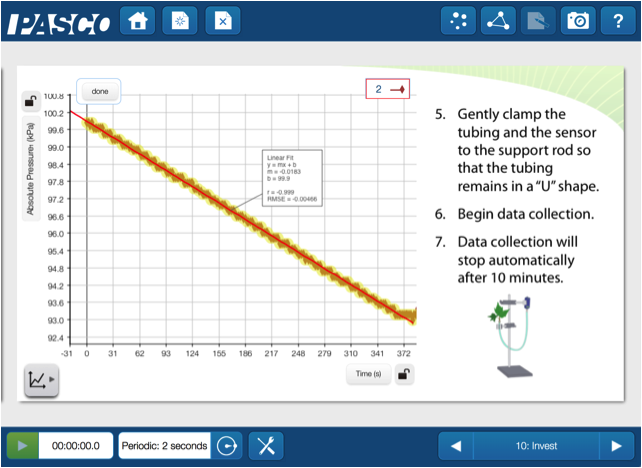
The waxy coat of a desert dwelling plant was then modeled with petroleum jelly that was coated on both sides of the leaves. Data was collected for 10 minutes. The graph below reveals that the plant’s water consumption was reduced as the air pressure decreased from an initial pressure of 100.1 kPa to 97.2 kPa. The barrier also reduced the rate of evaporation. This reduction can be seen by calculating a linear fit, which showed that the air pressure decreased only at a rate of 0.0097 kPa/sec.
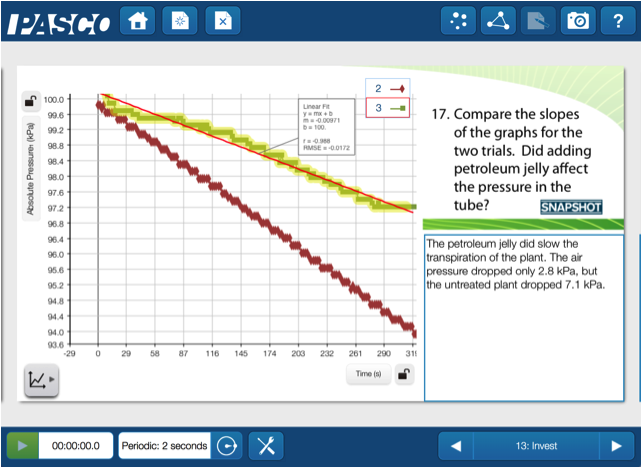
In addition to providing a hands-on experience with technology, the Key Concepts in Science SPARKlabs help students make connections with the concepts they are learning through an engaging introduction, where students make predictions about what they think will happen during the investigation. The learning continues as the lab guides students with data analysis and interpretation questions that help them interpret data, review key vocabulary, and transfer the information they learned to a new contexts.
